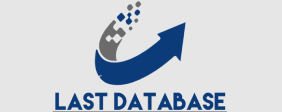Think about how businesses talk to each other. They do not just pick up the phone every time. latest mailing database Often, they send emails. These are called B2B emails. B2B means “business-to-business.” So, B2B emails are messages sent from one company to another. They are very important. They help businesses find new customers. Also, they help keep current customers happy. Learning how to write good B2B emails is a valuable skill. It can help your company grow a lot. Let us learn all about them.
These emails are different from emails you send to friends. They need to be professional. They must be clear and to the point. Every word should matter. Good B2B emails build trust. They show your business is serious. They also help to build strong connections. We will explore how to make your emails stand out. We will discuss what makes them effective. Furthermore, we will learn common mistakes to avoid. Getting your B2B email strategy right is crucial.
Sending the right message can open many doors. It can lead to new deals. It can also strengthen partnerships. Therefore, understanding B2B emails is key. This article will guide you step-by-step. You will learn how to write emails that get results. We will cover everything from subject lines to follow-ups. Indeed, mastering B2B emails can change your business communication for the better.

What Makes B2B Emails Special?
B2B emails are not like regular ads. They are not for selling directly to many people. Instead, they target other businesses. These businesses have different needs. They look for solutions to their problems. Your email should offer those solutions. Businesses usually make big buying choices. This process takes time. It often involves many people. So, your email needs to be thoughtful. It must be very clear.
Furthermore, B2B emails focus on value. They show how your product helps another business. This is different from consumer emails. Consumer emails might focus on a quick sale. B2B emails build long-term relationships. They aim to solve real business challenges. Therefore, the language used is more formal. It is also more problem-solution oriented. Always remember your reader is another business, not an individual consumer.
Image 1 Idea: A simple, clean graphic showing two gears interlocking. One gear could be labeled “Your Business” and the other “Client Business.” Small email icons could be subtly integrated around the gears, symbolizing smooth communication. The overall look should be professional and straightforward, representing partnership through communication.
Building Your B2B Email Strategy
A good plan makes all the difference. Just sending emails without a plan is not smart. You need a strategy for B2B emails. This plan should include your goals. What do you want your email to achieve? Do you want a meeting? Do you want a sale? Also, know your audience. Who are you writing to? What are their business problems? Knowing this helps you write better. It helps you tailor your message.
Think about the journey your customer takes. This is called the “buyer’s journey.” Your emails should match where they are. Early on, you might send information. Later, you might send a proposal. Each email should move them forward. It should guide them to the next step. Planning ensures your emails work together. Consequently, they become a powerful tool.
Understanding Your Audience
Knowing who you are emailing is vital. You are emailing a business. But who inside that business? Is it the CEO? Is it a marketing manager? Different people have different concerns. A CEO cares about big picture growth. A manager cares about daily tasks. Your email should speak to their specific role. Use language they understand. Talk about problems they face every day.
Research helps a lot here. Look at their company website. Find out what they do. Read their news. This helps you personalize your email. It shows you did your homework. This effort builds trust. People respond better to messages that feel personal. Therefore, take time to understand your audience deeply. This investment will pay off in better engagement.
Crafting the Perfect Subject Line
The subject line is like a door. It is the first thing people see. It decides if they open your email or not. So, it needs to be very good. Make it short and clear. Tell them what is inside the email. Use strong words. Make them want to learn more. Avoid words that sound like spam. For example, “Free money” is bad. “Solution for better sales” is good.
Think about what problem you solve. Can you hint at it in the subject? Also, make it personal if you can. Using their company name can help. For instance, “Helping [Company Name] Boost Efficiency.” A good subject line gets attention. It creates curiosity. Remember, it is your first chance to make an impression. Spend time making it strong and compelling.
Writing Engaging Email Body Content
Once they open your email, the real work begins. The body of your email must keep their interest. Start with a hook. What is the most important thing? Put it first. Get to the point quickly. Businesses are busy. They do not have time for long introductions. Explain how you can help them. Focus on benefits, not just features. How will your solution make their life easier?
Use simple words. Avoid jargon or technical terms they might not know. Break your text into small paragraphs. This makes it easier to read. Use bullet points for lists. This helps highlight key information. Always include a call to what is a mailing list database? your secret contact keeper! action. Tell them what you want them to do next. Do you want them to click a link? Do you want them to reply? Make it clear.
The Power of a Clear Call to Action (CTA)
Every good B2B email needs a clear CTA. A CTA tells your reader what to do next. It is like giving directions. Do not leave them guessing. Examples include “Schedule a Demo,” “Download the Guide,” or “Reply to Learn More.” Make your CTA stand out. Use a clear button or bold text. Make it easy to find and click. One clear CTA is usually best. Too many can confuse people.
Think about the logical next step. What do you want them to do? Make that the CTA. For instance, if your email explains a new software, the CTA might be “Watch a short video.” If it is about a service, it could be ” whatsapp filter Request a free consultation.” A strong CTA guides the reader. It helps convert interest into action. Thus, it is a critical part of your email.

